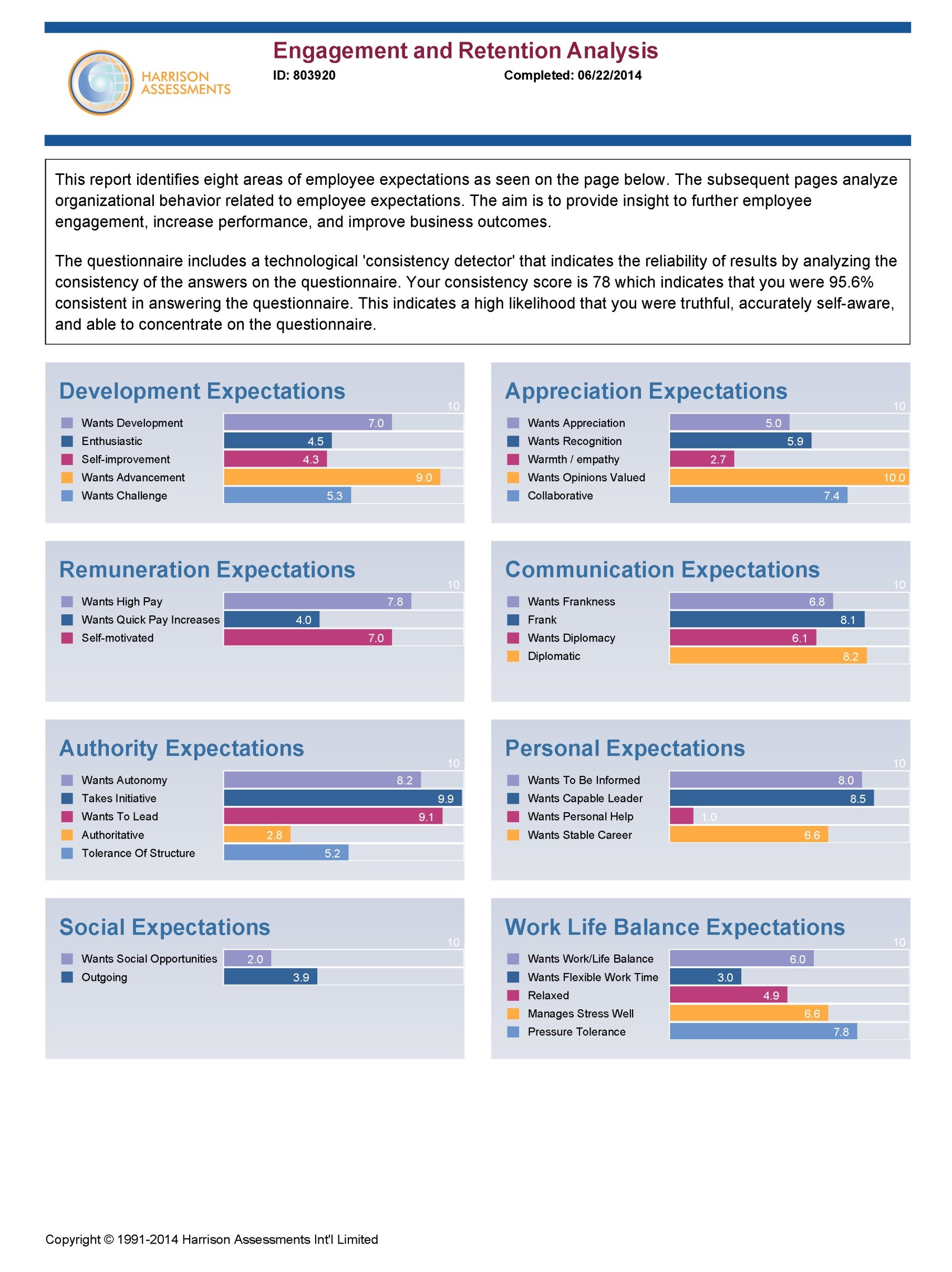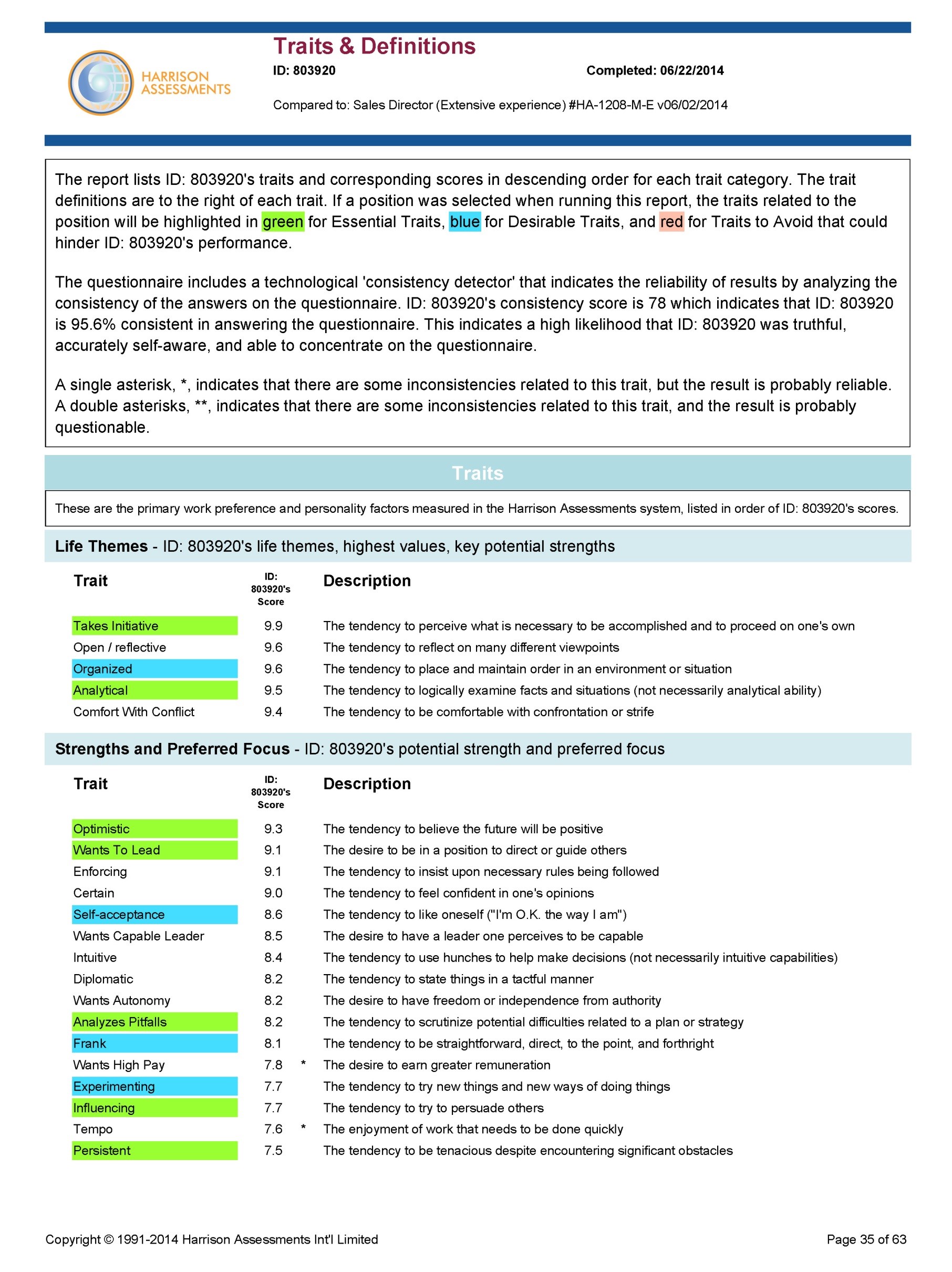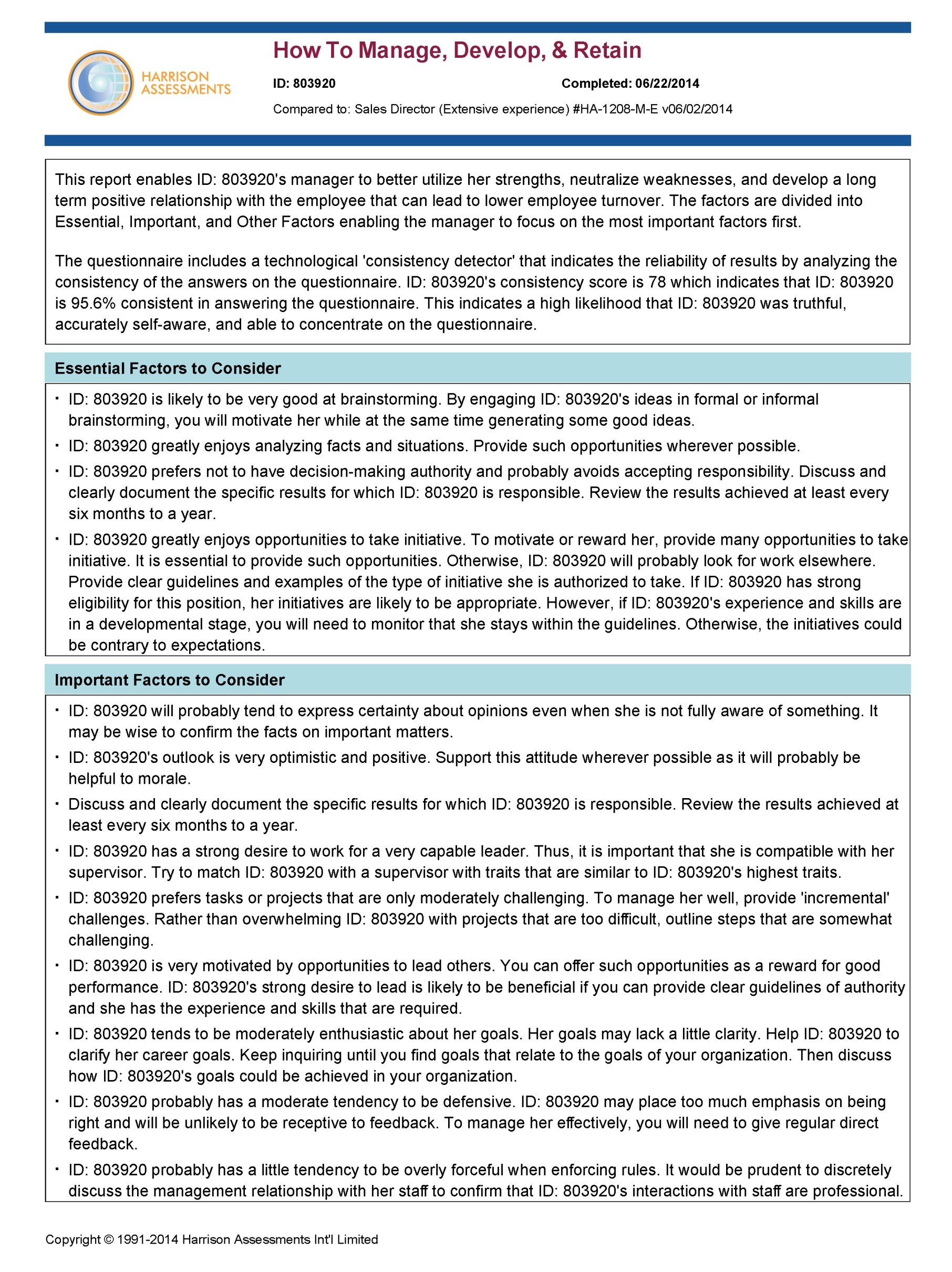The following reports are powerful tools for the onboarding process and especially for the ongoing management of employees who have taken the assessment. By understanding the motivations, natural tendencies, values, work preferences, styles and other attributes of your key people, you'll be much better able to engage them and to make the best use of their talents.
Engagement and Retention Analysis
How to Manage, Develop and Retain
Traits and Definitions
Benefits to Managing a Business
The Leader/Owner
- Provides the "intel" and understanding so that the leader can be most effective in dealing with themselves and others in planning, organizing, leading and managing the overall organization
The Organization
- Find those who fit their job (enjoy it, master it…), they are as much as 4X's as productive as those who don't
- Find those who fit your culture and values (or the one you want to move toward)
- Eliminate those with ethical issues
- Develop a team with a balanced set of talents so that weaknesses are compensated for by strengths
- Avoid the conflicts that come from misunderstanding styles, motivations and preferences
- Maximize productivity by using all your people's potential optimally
- By understanding motivations and preferences, you can much more effectively engage all your employees, improving productivity , "pro-activeness" and enthusiasm
Outcomes
- Reduce costs through improve management, motivation and alignment
- Improve effectiveness(revenue growth) through improved understanding and alignment with goals



















